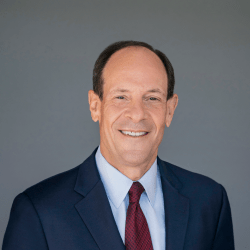It’s inevitable that every large government expenditure program will be accompanied by some waste, fraud, and abuse. That especially applies to the massive emergency expenditure bills such as the stimulus funding in response to the economic recession in 2009, the COVID pandemic relief spending in 2020, or the recent infrastructure spending bill in 2021. Coordinated oversight of these kinds of expenditures is therefore essential. This three-part series by Glenn Fine, the former inspector general for the Department of Justice and the acting inspector general for the Department of Defense, explores what we have learned about this fight in the past and what President Biden and Congress should do to deter waste, fraud, and abuse in the recently passed infrastructure spending bill. These articles discuss two previous models of coordinated oversight among inspectors general and the need for a similar model for infrastructure spending and any other future large expenditure programs. In the third article he makes four specific recommendations to enhance such oversight.
In 2009, in response to the Great Recession, President Obama and the Congress passed The Recovery Act. The Act expended approximately $800 billion to stimulate economic activity and create jobs through infrastructure projects, contracts, grants, unemployment benefits, and other programs.
The legislation also created an oversight board, the Recovery Act Accountability and Transparency Board, often known as the RAT Board. That is probably the worst acronym ever for a government organization. The Recovery Board hated the acronym, but it stuck and was widely used. The Board, which preferred to be known as the Recovery Board, included eleven federal inspectors general whose agencies received the majority of Recovery Act funds. Its mission was “to coordinate and conduct oversight of covered funds to prevent fraud, waste, and abuse.”[1]
The Recovery Board was led by a full-time chair, Earl Devaney, the well-respected inspector general of the Interior Department. The Board received $84 million dollars in funding and employed approximately 35 staff members. Full disclosure—I was the Department of Justice inspector general at the time and was on that board. I witnessed first-hand its outstanding work.
The Board established a public-facing website, called Recovery.gov, which graphically showed where the Recovery Act funds were spent. Anyone could click on a map on the website to see if funds were used in any zip code.
The Board also built a data analytics center, called the Recovery Operations Center (ROC), which maintained a database of Recovery Act contracts and grants that could be mined for links among contractors and grantees. The ROC employed predictive analysis to help other oversight entities, such as individual inspectors general, focus their oversight resources. For example, the ROC developed risk analysis for certain expenditures by examining fraud indicators such as the past criminal history of key parties involved in a project and tips from citizens about suspicious aspects of construction projects. The ROC also used other public information to identify relationships between individuals and legal entities who had previously committed fraud and who were receiving Recovery Act funding, sometimes under different names. These high risk indicators allowed predictive analysis of which recovery payments were likely to be fraudulent. Over 50 federal OIGs and agencies received assistance from the ROC, and its analysis of likely fraud led to many referrals to individual IGs for criminal investigations.
The Board’s chair also worked closely with the Administration, and in particular Vice President Biden, to ensure that the Board was receiving accurate data for use on its website and in the ROC’s data analysis. Devaney later described the benefits of the public website detailing the use of Recovery Act funds:
“You can’t overestimate the value of putting [stimulus data] on a website where people could go on and put in their ZIP code and see where that money was supposed to be in their neighborhood and then opine on that—good, bad or indifferent . . . It allows us to prevent fraud in the first instance, or at least interrupt it in its commitment, as opposed to the old paradigm that most inspectors general, including myself, used to operate on of [sic] simply detecting it and chasing it down the street after the money was gone.”
Devaney also discussed how the website was useful in developing fraud leads:
“We leveraged that website to have people go in with their ZIP codes and see things. And if it didn’t seem right to them, we provided them not only with 800-numbers but electronic ways to convey to us that, ‘Hey I’m next door to that address of where that money went and it’s a vacant building.’ That the kind of thing we turned into a follow-up audit or follow-up investigation. We essentially got the public to help us do our job.”
Kathleen Tighe, the Department of Education inspector general who succeeded Devaney as the chair of the Recovery Board, further described the benefits of the Board’s data analytics capabilities:
“ROC’s strength is the ability to rapidly aggregate and analyze large, complex volumes of data to screen for potential risks or identify targets and to provide deeper investigative information, such as link analysis and discovery of non-obvious relationships, in the support of preventive activities, audits, investigations, or prosecutions. Customers are supported through collaborative work with the ROC analysts, thus benefiting from the Board’s infrastructure, skilled workforce, multiple advanced analytical tools, and proven tactics to quickly detect fraud in federal funding.”[2]
The Recovery Board was widely praised as a model of collaborative oversight in the inspector general community and a strong deterrent to fraud in Recovery Act spending. For example, an Office of Management and Budget official who worked with the ROC stated that it “rapidly improved the speed and specificity of fraud detection, flagging suspicious patterns in fund disbursement data that normally eluded federal agencies racing to spend [Recovery Act] money to stimulate local economies.” Others commented on the unprecedented low level of fraud associated with Recovery Act expenditures. According to Devaney, “Historically, fraud losses on big government outlays usually run between 5% and 7%. With $2 trillion on the table [in Recovery Funds] every fraudster will show up. Recovery kept the fraud losses at less than 1% with a very sophisticated enterprise.”[3]
The Board’s oversight of federal spending was later expanded. In 2012, the Consolidated Appropriations Act gave the Recovery Board authority to help with oversight of all federal spending. In 2013, Congress specifically assigned the Board responsibility for oversight of the relief spending related to Hurricane Sandy.
Yet, the infrastructure and data analysis tools built by the Recovery Board ended when the Board went out of existence in 2015.[4] The Data Accountability and Transparency Act of 2014 (DATA Act) had authorized the Department of the Treasury to establish a data analysis center or expand the Recovery Board’s existing ROC. But the Treasury Department declined to continue the ROC, arguing that transferring the ROC’s assets to the Treasury Department would not be “cost-effective or add value to Treasury Operations.”
The coordinating group for all federal inspectors general, the Council of the Inspectors General on Integrity and Efficiency (CIGIE), was not able to take over operating the ROC, even though some inspectors general promoted the need for it and benefited from ROC referrals. CIGIE estimated that it would cost about $10 million a year for it to continue to operate the ROC. But CIGIE does not receive its own appropriations. It is funded primarily through member contributions, and it did not have sufficient resources to maintain the ROC. The ROC therefore shut down when the Recovery Board closed in 2015. As often happens in the federal government, a powerful innovation was allowed to disappear when the urgency of the crisis had passed.
Next: oversight of pandemic spending
Footnotes
[1] “U.S. Inspectors General: Truth Tellers in Turbulent Times,” Charles Johnson and Kathryne E. Newcomer (2020), Brookings, pages 52-53 (“U.S. Inspectors General”).
[2] “U.S. Inspectors General: Truth Tellers in Turbulent Times,” Charles Johnson and Kathryne E. Newcomer (2020), Brookings, page 52 (“U.S. Inspectors General”).
[3] POGO report
[4] “U.S. Inspectors General: Truth Tellers in Turbulent Times,” Charles Johnson and Kathryne E. Newcomer (2020), Brookings, page 53 (“U.S. Inspectors General”).






Commentary
Fighting fraud, waste, and abuse—the 2009 Recovery Act
February 11, 2022